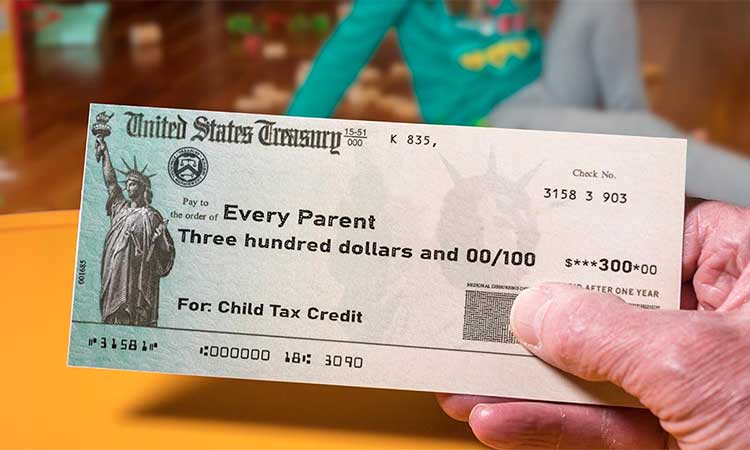
Illustrative picture.
Allison Schrager, Tribune news provider
The greater infant Tax credit has expired and that i, for one, will now not mourn it. Neither if you happen to.
certain, it's been extraordinarily ordinary — who doesn't like getting greater money from the government? but it's now not remarkable coverage. Taxpayers and recipients of the credit deserve better.
here's a brief assessment: The improved tax credit was a successor to the $2,000 edition that turned into part of the 2017 tax reform. The credit turned into elevated remaining 12 months by using the Joe Biden administration to $three,600 annually for each child beneath 6 and $3,000 for older infants, with half of that paid monthly and the leisure claimed on your tax return.
every household got the identical volume as much as an salary restrict. The pandemic-inspired enhancement become set to expire at the conclusion of 2021, when the credit score reverted to the prior $2,000. The president's build lower back better plan would extend the increase, but that concept is in limbo because the invoice is still blocked by opponents in Congress.
because the expiration of the superior credit potential households will lose cash relative to ultimate 12 months, some economists and pundits are arguing that the software should still be preserved, considering that it become a superb success in achieving its goal of cutting back infant poverty. Don't consider the hype.
The greater CTC may additionally have had intentions, but it's no longer utterly clear what they had been. in line with the timing and communication from the White residence it aimed to reduce baby poverty and provide aid to families all over the pandemic.
The pandemic justification not ever made tons feel. Between the economic have an effect on payments, more desirable unemployment merits, eviction moratorium and pause in student personal loan payments, most households weren't financially much worse off than they had been before the pandemic. So possibly the more desirable CTC was purported to meet the bigger, pre-existing intention of cutting back newborn poverty while providing relief to money-strapped core-classification families. And who can argue with these goals?
The case for a completely larger middle-category entitlement isn't as potent. perhaps the U.S. may still have a large entitlement state for working core- and higher-middle-class families. however here is no longer an affordable software, and it represents a big trade in American welfare, which has historically targeted the negative, disabled and aged.
The superior CTC prices more than $100 billion a year, and $1.6 trillion over the subsequent 10 years if made everlasting — more than is spent on food stamps, income support for low earners and housing information. well-nigh, the better credit potential identifying both less cash for different programs or European-sized taxes. probably that's our future, but there are change-offs when it comes to the cost and a much less productive economic climate.
The case for trying to cut back child poverty is more straightforward to make. earlier than the pandemic about 14% of american children lived in poverty, compared to 12.eight% of children in other OECD international locations. That's shameful for the area's richest nation. And as proponents of the brand new CTC element out, it did cut back poverty. Estimates put the discount of baby poverty at about 34%, and it will probably have decreased food insufficiency with the aid of 27%. This isn't extraordinary; if you ship lots of families checks they'll have greater money.
however the discount in poverty doesn't always imply here's a very good coverage. first off, the pandemic remains raging. We basically don't know how the more advantageous CTC works in ordinary instances and in a standard labor market. as an instance, many poor babies didn't get regular schooling, which is a source of food from the free lunch program. and perhaps child poverty may well be reduced in different, improved ways in which charge the taxpayer much less funds.
by these requirements the improved CTC falls brief. by means of one estimate handiest 57% of households incomes less than $25,000 even got the credit since it is run with the aid of the IRS and extremely low earners or no earners don't all the time file. The stronger CTC goals to cut back poverty, but in comparison to other government programs a smaller fraction of the money goes to low-earnings individuals. this is because of the titanic advantages paid to middle and higher core-class earners.
It's once in a while argued that it's integral to present the credit to larger earners as a result of if you take advantages away as individuals earn more it discourages advancement. however the present version of the CTC also has hazardous distortions. The 2017 CTC created incentives to work via expanding the measurement of the credit score as income rose (as much as $30,000 in profits). getting rid of this characteristic and offering a flat credit score (within a better revenue limit), reduces the return-to-work benefit (the cash you'd get from working compared to now not working).
No comments:
Post a Comment
Note: Only a member of this blog may post a comment.